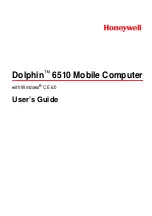
UPI-41A/41AH/42/42AH USER’S MANUAL
Four PORT 2 lines function as general I/O similar to
PORT 1. Also, the RTS signal is generated on PORT 2
under software control when the UPI has serial data to
send. The CTS signal is monitored via PORT 2 as an
enable to the UPI to send serial data. A PORT 2 line is
also used as a software generated interrupt to the mas-
ter processor. The interrupt functions as a service re-
quest when the UPI has a byte of data to transfer or
when it is ready to receive. Alternatively, the EN
FLAGS instruction could be used to create the OBF
and IBF interrupts on P
24
and P
25
.
The RS232C interface is implemented using the TEST
0 pin as a receive input and a PORT 2 pin as a transmit
output. External packages (A
0
, A
1
) are used to provide
RS232C drive requirements. The serial receive software
is interrupt driven and uses the on-chip timer to per-
form time critical serial control. After a start bit is de-
tected the interval timer can be preset to generate an
interrupt at the proper time for sampling the serial bit
stream. This eliminates the need for software timing
loops and allows the processor to proceed to other tasks
(i.e., parallel I/O operations) between serial bit sam-
ples. Software flags are used so the main program can
determine when the interrupt driven receive program
has a character assembled for it.
This type of configuration allows system designers flex-
ibility in designing custom I/O interfaces for specific
serial and parallel I/O applications. For instance, a sec-
ond or third serial channel could be substituted in place
of the parallel I/O if required. The UPI’s data memory
can buffer data and commands for up to 4 low-speed
channels (110 baud teletypewriter, etc.)
Application Notes
The following application notes illustrate the various
applications of the UPI family. Other related publica-
tions including the
Microcontroller Handbook
are avail-
able through the Intel Literature Department.
231318 – 46
Figure 6-4. Universal I/O Interface
65

































